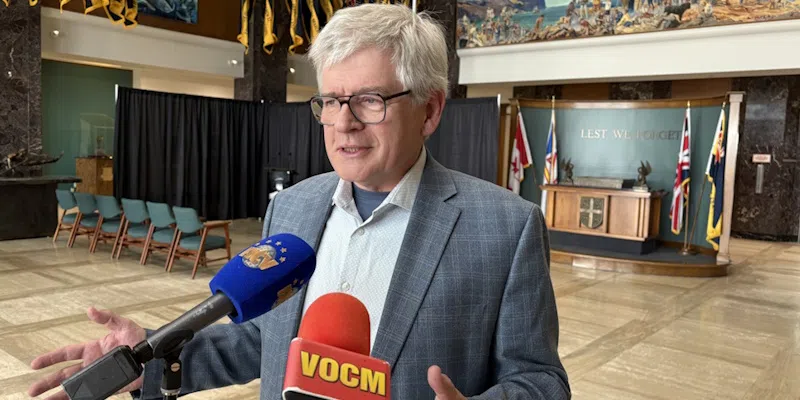In the shadow of St. John’s aging hospital infrastructure, a crisis decades in the making has finally reached its breaking point. Provincial NDP Leader Jim Dinn delivered a scathing assessment yesterday, characterizing the deteriorating conditions at St. John’s hospitals as symptomatic of deeper societal failures that transcend mere healthcare policy.
“What we’re witnessing isn’t simply a healthcare crisis—it’s the culmination of years of neglect across multiple sectors,” Dinn told reporters during an impromptu press conference outside the Health Sciences Centre. “The collapsing infrastructure at our hospitals represents a fundamental failure of governance and planning that extends far beyond the walls of these institutions.”
Dinn’s comments come as patients and healthcare workers contend with increasingly hazardous conditions. Last week, sections of ceiling collapsed in three separate areas of the Health Sciences Centre, narrowly missing patients and staff. Engineers have identified critical structural issues in both the Health Sciences Centre and St. Clare’s Mercy Hospital, with repair estimates exceeding $95 million—funds not allocated in the current provincial budget.
Healthcare professionals have been sounding alarms for years. Dr. Sarah Matheson, Chief of Emergency Medicine, expressed frustration at the mounting challenges. “We’re practicing medicine in conditions that wouldn’t be acceptable in most developed nations,” she said. “Our staff shows remarkable resilience, but there’s a limit to what can be accomplished in facilities literally crumbling around us.”
The crisis has deeper historical roots, according to Canada News analysts. St. John’s hospitals were constructed during the 1970s and early 1980s, designed for a significantly smaller population and without consideration for today’s advanced medical technologies. Multiple administrations have deferred comprehensive renovations, creating what healthcare policy experts now describe as a “perfect storm” of infrastructure failure.
“This isn’t just about buildings,” Dinn emphasized. “It’s about decades of policymaking that prioritized short-term political gains over sustainable infrastructure planning. It’s about economic policies that left our province vulnerable to boom-and-bust cycles in resource industries, affecting our ability to fund essential services consistently.”
Financial documents obtained by CO24 Business reveal that maintenance budgets for provincial healthcare facilities have decreased by 22% in real terms over the past decade, despite inflation and aging infrastructure requiring increased investment. Provincial Auditor General reports from 2019 and 2022 specifically warned of “imminent infrastructure failure” if significant investments weren’t made.
Community advocacy groups have mobilized in response. The newly formed Coalition for Healthcare Infrastructure Renewal gathered over 25,000 signatures demanding emergency funding for hospital repairs and accelerated planning for replacement facilities. “These aren’t luxury requests—these are basic safety concerns,” said coalition spokesperson Maria Fitzgerald.
Premier David Sullivan has promised a comprehensive response plan to be unveiled next week, but critics remain skeptical. Opposition parties have united in calling for immediate action rather than further studies or announcements.
“The situation demands more than political theater,” said Dinn. “It requires genuine cross-partisan cooperation and acknowledgment that this crisis stems from collective governance failures spanning decades and multiple administrations.”
Healthcare policy experts from Memorial University suggest that the crisis presents an opportunity to rethink healthcare delivery in Newfoundland and Labrador entirely. Dr. Jonathan Reynolds, Professor of Healthcare Policy, advocates for decentralized care models that reduce dependency on large hospital complexes.
“The current crisis might force us to innovate in ways that actually improve care delivery,” Reynolds noted. “Sometimes systems need to break before they can be rebuilt properly.”
As political debates continue, frontline healthcare workers and patients bear the brunt of deteriorating conditions. The question now facing Newfoundland and Labrador isn’t simply how to repair crumbling hospitals, but whether society is prepared to address the fundamental governance issues that allowed critical infrastructure to deteriorate to this dangerous point.










